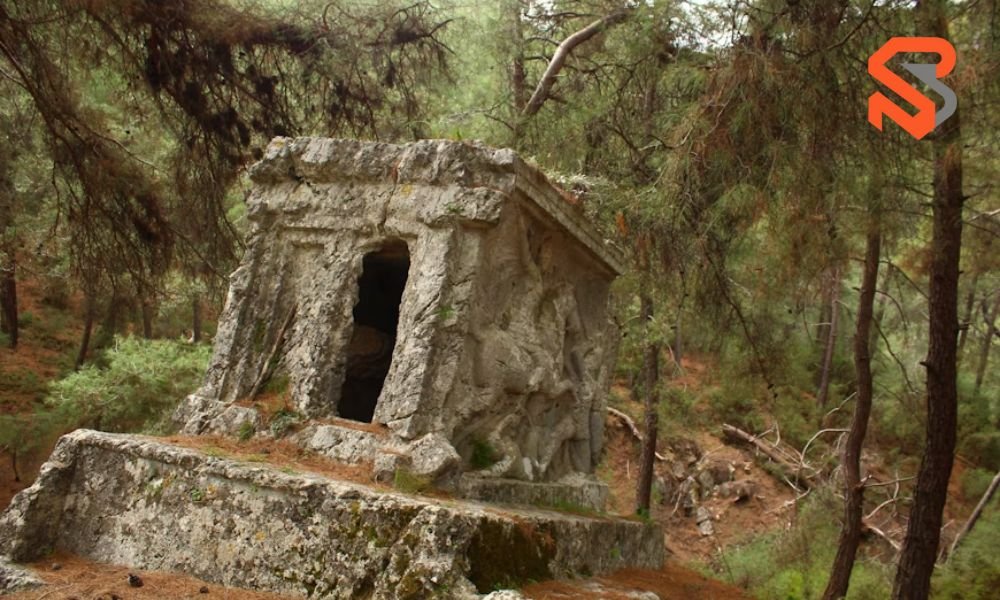Introduction
“Tomb of Annihilation Disclaimer” refers to the warning attached to the Tomb of Annihilation adventure module for Dungeons & Dragons. This disclaimer is a forewarning that this campaign contains deadly traps, permanent consequences, difficult moral choices, and survival horror elements. It helps players understand that this is not a lighthearted adventure. It prepares both Dungeon Masters (DMs) and players for an experience where danger is constant, character death is real, and horror is part of the journey.
In this article we explore what the Tomb of Annihilation Disclaimer really means how it influences gameplay why it matters for group safety and suggestions to run or participate with care. This article aims to help groups get the most from this adventure while keeping it fun and respectful.
What the Tomb of Annihilation Disclaimer Says
At the opening of Tomb of Annihilation players and readers are presented with a bold warning. The language is dramatic and intense. It hints at betrayal, traps, lost characters, harsh wilderness, and high stakes. The exact wording teases that this adventure “will make your players hate you” by exposing them to danger that will strain their patience, test their mettle, and sometimes lead to permanent loss. The disclaimer also encourages tearing up character sheets in frustration as a joking gesture toward how deadly the adventure can be.
The purpose of that wording is not only humor. It frames the tone up front. It tells players this is survival horror mixed with exploration. It reminds DMs that this module was built to challenge players severely, not to guarantee heroic success.
Why the Disclaimer Exists
There are several reasons the Tomb of Annihilation Disclaimer is included. Understanding them helps groups prepare better.
1. Tone Setting
The warning helps define the mood from the very start. When all participants know going in that the adventure is punishing, they are more likely to expect risks and behave differently. Players become more cautious, DMs more prepared to balance, and the group dynamic shifts toward careful planning.
2. Player Agency and Consent
A disclaimer gives players a chance to opt in or out. Some players love high stakes, risk, character loss. Others prefer lighter roleplay, safer adventures. The disclaimer gives fair warning so people can decide whether this is for them. That avoids frustration, arguments, or conflicts later when two players expect very different experiences.
3. Safety, Emotional and Practical
Some themes can trigger anxiety, grief, or discomfort—permanent death, loss of companions, dark rituals, or abandoned tombs in jungle settings. The disclaimer flags potential emotional impact. It encourages DMs to check in with players about comfort levels. It also pushes groups to do a Session Zero: a planning session to set expectations, limits, tone of play, and safety tools (such as pause or safe word if things get too oppressive).
4. Encouraging Creativity under Pressure
Because risk is real, players who are clever and cautious tend to thrive. The danger increases the reward of clever tactics, resource management, exploration, and roleplay. The disclaimer pushes players to think not only about combat but about survival, risk mitigation, and group coordination.
What Players Should Expect from the Adventure
The Tomb of Annihilation Disclaimer signals certain design elements and gameplay features. Here are what players should anticipate.
-
Frequent danger and permanent consequences. Character death is possible and sometimes unavoidable. If characters die they may not return, especially if the Death Curse is active.
-
Resource scarcity. Healing, rest, magic items and safe havens may be rare. Survival often depends on careful use of consumables and rest.
-
Harsh environment. Jungles, chult, ancient ruins. Weather, terrain, hazards, disease, traps. The world itself is a threat.
-
Moral choices and ambiguous morality. NPCs may have conflicting agendas. The decisions may impact groups in unexpected ways.
-
Mystery and puzzle solving. Exploration matters. Mapping, clues, lore, and investigation will make a difference.
-
Tension and uncertainty. The adventure is designed to push players to their limits mentally and strategically. Surprises, ambushes, unknowns.
How Dungeon Masters Should Use the Disclaimer
DMs have a central role in making the adventure rewarding while respecting the risk. Here are recommended practices.
Session Zero
Before the campaign starts a dedicated meeting should take place. In Session Zero the DM should read aloud or paraphrase the disclaimer. Players can discuss what they like and dislike. Topics like character death, hidden information, fear or horror, in game risks like traps or curses should be discussed. The group should agree on boundaries and safety tools everyone is comfortable with.
Safety Tools
Use mechanisms like:
-
X-card (a signal to pause or skip content)
-
Lines and veils (explicitly name topics to avoid, topics to acknowledge but not describe in detail)
-
Debriefing after difficult sessions
-
Checking players’ emotional comfort regularly
These tools help ensure that serious or dark themes do not make players feel unsafe or traumatized.
Adjusting Difficulty
DMs can adjust traps, combat encounters, healing availability, or rate of character loss. They can curate which parts of the module are more punishing and which are more forgiving. Some groups prefer exploring more and fighting less. Some prefer tension and risk. The DM should balance as per their group’s taste.
Lore Sensitivity and Culture
Chult is an exotic setting filled with dense jungle, lost civilizations, dinosaur threats, and indigenous cultures. The DM should avoid falling back on stereotypes or sensationalism. Consider enriching NPCs, giving them agency, culture, diversity. Use sensitivity, avoid caricature or harmful tropes.
How to Play with Awareness and Fun
Players also have a role in making the adventure better. Here are ways to engage positively, embracing the Tomb of Annihilation Disclaimer without letting it ruin enjoyment.
-
Choose characters you are okay risking. Accept that loss is possible and that success may feel earned.
-
Communicate your limits. If certain themes or content are difficult for you tell your DM.
-
Focus on survival strategies. Use creative tactics, avoid unnecessary risks, think as much about how to run away or hide as how to fight.
-
Collect lore, talk to NPCs, use knowledge to avoid traps.
-
Support teammates. If a character is weak or injured, help them with resources or narrative aid.
These behaviors help the adventure feel intense but also satisfying and avoid constant frustration.
Why the Disclaimer Affects Group Choices
Because Tomb of Annihilation is more lethal than many other modules, the disclaimer influences several decisions before or during play.
-
Character creation decisions: players may pick classes or backgrounds with reliable healing, mobility, or utility.
-
Team composition: balancing damage, resource recovery, navigation, and support.
-
Resource management from day one: conserving magic items, spells, hit dice, food and water.
-
Plot pacing: accepting that some plotlines may derail, adjusting based on group losses.
Groups that ignore the implications of the disclaimer often experience player conflict or burnout. Recognizing it early helps guide choices.
SEO Keywords Related to Tomb of Annihilation Disclaimer
To help people find information about the Tomb of Annihilation Disclaimer here are some useful keywords:
-
Tomb of Annihilation Disclaimer
-
TOA disclaimer
-
Death Curse adventure warning
-
Dangerous D&D modules
-
Chult jungle campaign risks
-
Permanent character death D&D 5e
-
Session Zero D&D tips
-
Dungeon Master safety tools
Conclusion
The Tomb of Annihilation Disclaimer is not just a gimmick. It is an essential part of preparing for one of the most deadly, atmospheric, and emotionally intense adventures in Dungeons & Dragons. It helps players know what they are signing up for and gives Dungeon Masters the space and responsibility to run it thoughtfully.
By respecting the warning, talking as a group, using safety tools, balancing risk and fun, and embracing creativity under pressure players can enjoy the grim beauty of the adventure rather than suffer from surprise or conflict. A well run Tomb of Annihilation campaign can be memorable, heroic, and meaningful — not simply brutal.
If you plan to run or play in Tomb of Annihilation, take the disclaimer seriously. Discuss it. Adjust where needed. Trust your group. And above all prepare for an adventure where every moment matters.


